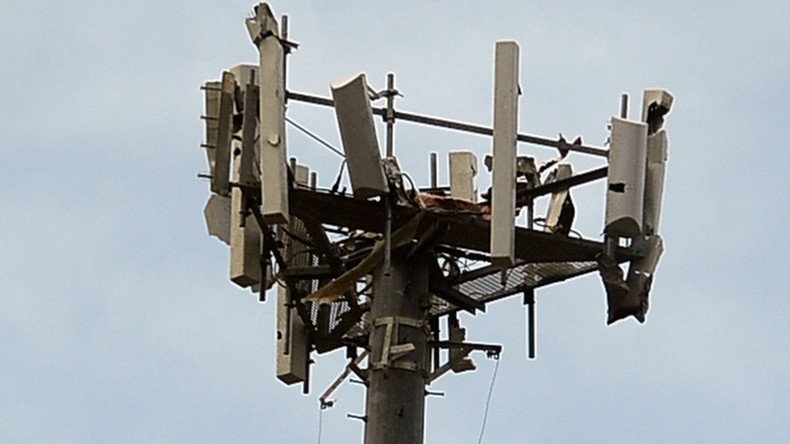Virginia State Police’s Stingray-like device captures voice communications – docs

Documents acquired from a Freedom of Information Act (FOIA) request show the Virginia State Police have a powerful cell-site simulator that can capture not only GPS location and metadata but voice communication.
In 2014, Virginia State Police upgraded their Digital Receiver Technology box, a cell site simulator, for a smaller more powerful model at a cost of over $500,000, according to documents acquired by Muckrock as part of a nationwide FOIA request and published Friday.
The DRT boxes, made by a Maryland company, are similar to other cell site simulators like Stingrays in that they can also intercept voice communication along with GPS location and other metadata, such as phone numbers and duration of call.
Unredacted docs show Virginia State Police's usage of stingrays: https://t.co/n5AZixPdtv awesome reporting from @MuckRock@resentfultweet
— ᴅᴇʀᴇᴋ ᴍᴇᴀᴅ (@derektmead) December 2, 2016
The device came with accessories and was installed in a Chevrolet Suburban outfitted specifically to run the device.
Cell-site simulators, or IMSI catchers, are devices that masquerade as a legitimate cell phone tower, tricking phones nearby into connecting to the device in order to log the international mobile subscriber identity (IMSI) numbers of mobile phones in the area or capture the content of communications.
The increased use of the devices by law enforcement had been kept from the courts and the public. In 2014, police in Florida revealed they had used such devices at least 200 additional times since 2010 without disclosing it to the court or obtaining a warrant.
The American Civil Liberties Union has filed multiple requests for the public records of Florida law enforcement agencies about their use of the cell phone tracking devices.
Running a 'fever': FBI and police #Stingray surveillance partnership revealed in docs https://t.co/EoxqPi2Fq8pic.twitter.com/M5ASKucbly
— RT America (@RT_America) August 27, 2016
In some cases, police have refused to disclose information to the courts, citing nondisclosure agreements signed with the Harris Corporation, which manufactures Stingrays.
The FBI defended these agreements, saying that information about the technology could allow adversaries to circumvent it.
#Baltimore Police use of Stingray technology illegal and discriminatory – FCC complaint https://t.co/vwRiItxnqKpic.twitter.com/VBakkWTB3t
— RT America (@RT_America) August 17, 2016
The ACLU said in 2014 that "potentially unconstitutional government surveillance on this scale should not remain hidden from the public just because a private corporation desires secrecy. And it certainly should not be concealed from judges."
Among the documents acquired in the FOIA request is a utilization log from May 2015 that shows the unit was used 12 times. In five of the 12 instances, it was ineffective in locating a suspect.
VA State #Police spent $585 million on #surveillance tech they've used 12 times since 2015 - 5 of which worked https://t.co/yCrG1EPIHZpic.twitter.com/X9TC4wexKC
— MuckRock (@MuckRock) December 2, 2016
“7/2/15, jurisdiction, Fredericksburg, Murder suspect search, suspect pinged in residential area, phone located, subject not located.”
On two missions looking for fugitives in May 2016, one subject was arrested, while in the other “ping subject first day-phone shut off, second day subject mobile for hours – could not track.”
But the device was useful in locating a missing person who was “found dead in wood” in Fredericksburg on May 2015.
“If the log fully documents all usage of the device since it was acquired, each of the 12 uses cost almost $50,000, and only 4 of them resulted in arrest,” Claire Gastanga, Executive Director of ACLU Virginia, told Muckrock.
“The relative infrequency of the use documented in the log they shared with you raises a significant question whether the more than half million dollars spent on the device and the vehicle in which it was installed, was a wise investment of public funds,” she added.
#BREAKING@MuckRock's investigative report on Va State Police's use of cell site simulator #surveillance devices https://t.co/EJdzx8erZ1
— ACLU of Virginia (@ACLUVA) December 2, 2016
Virginia is one of the few states that passed legislation limiting the use of Stingray devices and other cell-site simulators, as well as mandating warrants and probable cause be obtained prior to their use.
Among the documents was VSP’s High Tech Crimes Division Operation Manual including a list of equipment to be added to a TSS Hostage/Barricade Incident Response Vehicle “depending upon the unique circumstances of the respective situation.” Among the items: “hostage rescue phone, recon scout robot, night vision goggles, surveillance robot, fire extinguisher, pocket respirator.”
“Persons operating the… vehicle are responsible for its safe operation, including ensuring the stabilizer extensions and the telescopic camera boom are retracted prior to moving the vehicle.”












